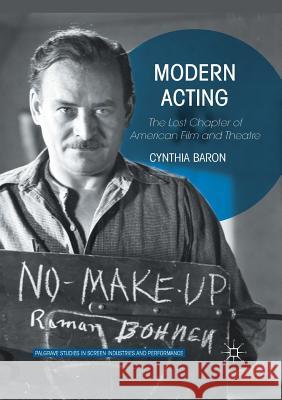Modern Acting: The Lost Chapter of American Film and Theatre » książka
topmenu
Modern Acting: The Lost Chapter of American Film and Theatre
ISBN-13: 9781349680832 / Angielski / Miękka / 2018 / 300 str.
Kategorie:
Kategorie BISAC:
Wydawca:
Palgrave MacMillan
Język:
Angielski
ISBN-13:
9781349680832
Rok wydania:
2018
Wydanie:
2016
Ilość stron:
300
Waga:
0.39 kg
Wymiary:
21.01 x 14.81 x 1.75
Oprawa:
Miękka
Wolumenów:
01
Dodatkowe informacje:
Wydanie ilustrowane











